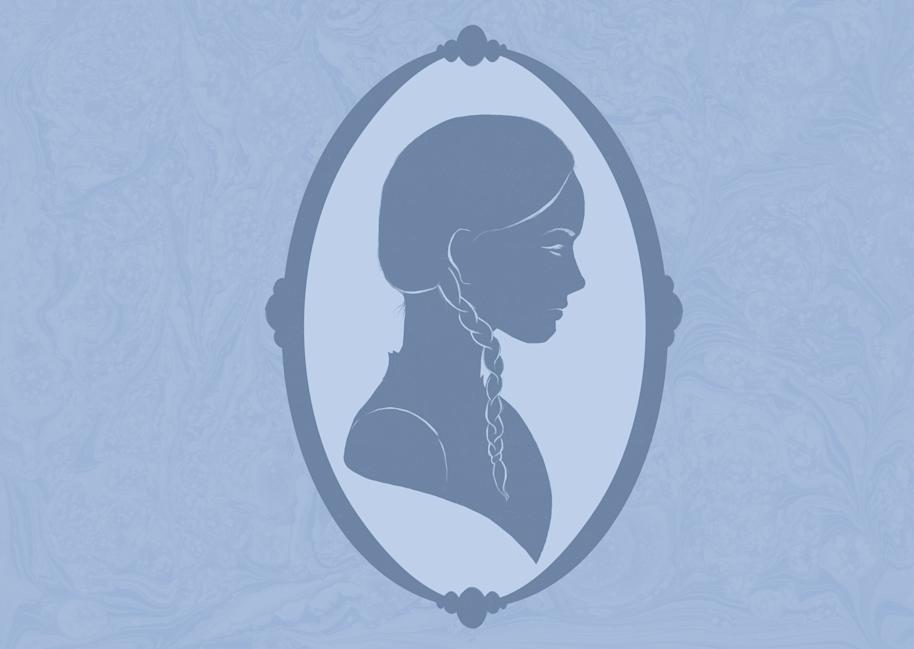
We have witnessed many acts of evil, mostly at the hands of the Death Eaters and their supporters. But it is striking, given the powerful potential of Dark magic, that the perpetrators of one of the very worst acts of evil seen in wizarding history were a group of ordinary Muggle boys.
The victim of this act was a six-year-old girl, Ariana Dumbledore, the younger sister of brilliant future Hogwarts headmaster Albus and future Hog’s Head barman Aberforth.

In this image:
‘When my sister was six years old, she was attacked, set upon, by three Muggle boys. They’d seen her doing magic, spying through the back garden hedge: she was a kid, she couldn’t control it, no witch or wizard can at that age. What they saw scared them, I expect. They forced their way through the hedge, and when she couldn’t show them the trick, they got a bit carried away trying to stop the little freak doing it.’
Harry Potter and the Deathly Hallows
The brutal attack on young Ariana left her scarred and damaged, mentally unstable and afraid to perform magic. Her powers ‘turned inwards’, which was extremely dangerous. Aberforth described her as mostly ‘sweet, and scared, and harmless’, but when she was upset or angry, magic would explode out of her and she would become ‘strange and dangerous’.
The ripple effect of poor Ariana’s attack spread through every corner of the family. Her father, Percival Dumbledore, went after the Muggle boys and was sent to Azkaban for assaulting them. Never revealing why he did it, Percival feared that if the Ministry knew that Ariana had been sent mad by what happened she would spend the rest of her life in St Mungo’s Hospital for Magical Maladies and Injuries.
Following Percival’s imprisonment, his wife Kendra Dumbledore moved the family from Mould-On-The-Wold, where the attack took place, to Godric’s Hollow, where she kept her daughter largely a secret and would only allow her outside at the dead of night.
In Rita Skeeter’s biography, The Life and Lies of Albus Dumbledore, she suggested that it was Kendra’s shame at having produced a Squib – a witch or wizard with no magical ability – which prompted her to keep her daughter out of the public glare. She claims that when Albus and Aberforth were asked why their sister wasn’t at Hogwarts, they had been taught by their mother to say, ‘My sister is too frail for school.’
Of course it wasn’t a lack of magical ability but rather the existence of a good deal of uncontrollable magic that was at the root of Ariana’s incarceration. Tragically, soon after Albus graduated from school and just before he was about to embark on an around-the-world trip with his friend Elphias Doge, his mother Kendra died as a result of one of Ariana’s explosions of magic.
‘Then, when she was fourteen ... see, I wasn’t there,’ said Aberforth. ‘If I’d been there, I could have calmed her down. She had one of her rages, and my mother wasn’t as young as she was, and ... it was an accident. Ariana couldn’t control it. But my mother was killed.’
Harry Potter and the Deathly Hallows
Albus cancelled his trip and returned home to look after Ariana, insisting that his younger brother Aberforth continue his studies at Hogwarts. But the teenage Albus, who had been planning his travels and his brilliant career, was resentful of being tied to a house in Godric’s Hollow and a sister who needed constant care.
‘I resented it, Harry.’
Dumbledore stated it baldly, coldly. He was looking, now, over the top of Harry’s head, into the distance.
‘I was gifted, I was brilliant. I wanted to escape. I wanted to shine. I wanted glory.
‘Do not misunderstand me,’ he said, and pain crossed the face so that he looked ancient again. ‘I loved them. I loved my parents, I loved my brother and my sister, but I was selfish, Harry, more selfish than you, who are a remarkably selfless person, could possibly imagine.
‘So that, when my mother died, and I was left the responsibility of a damaged sister and a wayward brother, I returned to my village in anger and bitterness. Trapped and wasted, I thought! And then, of course, he came …’
Harry Potter and the Deathly Hallows
‘He’ is, of course, Gellert Grindelwald, the brilliant wizard who might have earned the title of the most evil wizard of the last hundred years if Voldemort hadn’t pipped him to the post a generation later.
Gellert befriended a 17-year-old Albus when he came to stay with his great-aunt Bathilda Bagshot during the summer after Kendra’s death. The pair become inseparable as they shared ideas for ‘a new wizarding order’ and formed a shared obsession with Hallows. But Aberforth felt Albus’s friendship with Grindelwald had left Ariana neglected. He challenged them both and an argument turned into a fight with devastating consequences.
‘…I pulled out my wand, and he pulled out his, and I had the Cruciatus Curse used on me by my brother’s best friend – and Albus was trying to stop him, and then all three of us were duelling, and the flashing lights and the bangs set her off, she couldn’t stand it –’
The colour was draining from Aberforth’s face as though he had suffered a mortal wound.
‘– and I think she wanted to help, but she didn’t really know what she was doing, and I don’t know which of us did it, it could have been any of us – and she was dead.’
Harry Potter and the Deathly Hallows
Quite who cast the spell that killed Ariana was unclear, although when Harry met Albus Dumbledore in King’s Cross after he was nearly killed during the Battle of Hogwarts, the old headmaster strongly hinted that it was Grindelwald who shot the mortal curse.
‘Grindelwald lost control. That which I had always sensed in him, though I pretended not to, now sprang into terrible being. And Ariana ... after all my mother’s care and caution ... lay dead upon the floor.’
Harry Potter and the Deathly Hallows
It was during a ‘coffin-side brawl’ at Ariana’s funeral that the Hogwarts headmaster’s nose was broken by his furious brother, Aberforth. The siblings would later reconcile but feelings of blame and their separate grief appeared to have never truly dissipated.
Albus’s decision to go after Grindelwald to stop his atrocities years later was likely to have been fuelled in part by Ariana’s death. Recognising how his judgement had been obscured by his obsession with Hallows informed his decision to turn down the post of Minister for Magic.
The Hogwarts headmaster made one last mistake as a result of the feelings of shame and guilt surrounding Ariana’s death: he put on the cursed ring containing the Resurrection Stone which Voldemort had turned into a Horcrux. A misguided act, but an understandable one too.
‘I put it on, and for a second I imagined that I was about to see Ariana, and my mother, and my father, and to tell them how very, very sorry I was…’
Harry Potter and the Deathly Hallows



